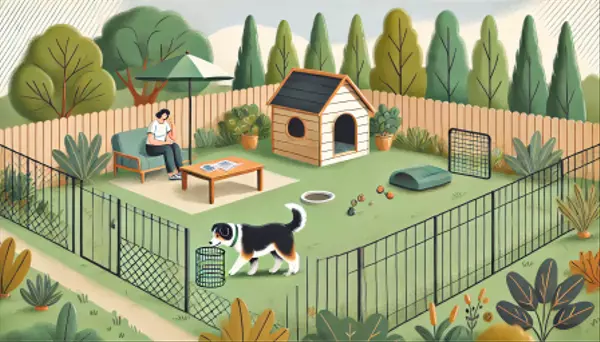

Moving with Dogs: Packing Essentials for Their Needs
Moving to a new home can be a stressful time for everyone involved, pets included. Unlike humans, pets do not understand the concept of moving and can become particularly anxious when their environment changes abruptly. To make this transition as smooth as possible for your furry friends, it’s essential to pack a pet-specific travel kit. Here are the key essentials you should include to ensure your pet remains comfortable and stress-free during the move: 1. Food and Water Supplies Food and Treats: Pack at least a week's supply of your pet's regular food and some treats. Changing a pet's diet suddenly can cause stomach upset, so it’s best to avoid switching food around the move. Bowls: Bring collapsible food and water bowls which are easy to pack and set up anywhere. 2. Medications and Health Records Medications: If your pet is on any medications, ensure you have enough to cover a couple of weeks. Moving can disrupt your usual schedule and access to a vet. Health Records: Carry a copy of all veterinary records and any necessary prescriptions, especially if you are changing the vet post-move. 3. Comfort Items Bedding and Toys: Include items that are familiar to your pet, like their favorite blanket, bed, or toys. The scent of these items can have a calming effect, easing the stress of transition. Crate or Carrier: If your pet uses a crate, include it as it’s a safe space for traveling and adjusting to a new environment. 4. Grooming Supplies Grooming Tools: Brushes, shampoo, and other grooming supplies should be readily accessible, not only for hygiene but also as a way to comfort your pet. Waste Supplies: Don’t forget to bring plenty of poop bags for dogs or a portable litter box and litter for cats. 5. Identification Collar and ID Tags: Update your pet’s collar with your new address and phone number. Also, consider a microchip if your pet isn’t already chipped. Recent Photos: In case your pet escapes or gets lost during the move, have recent photos on hand to help with identification. 6. Emergency Kit First Aid Supplies: Prepare a basic pet first aid kit that includes items like bandages, antiseptics, a tick removal tool, and a thermometer. 7. Familiarization Aids Calming Products: Products like pheromone diffusers or sprays, calming collars, or supplements can help soothe pets in stressful situations. Information on New Vet: Have contact information for a vet near your new home for any immediate needs after the move. Final Thoughts Packing these essentials will help minimize the discomfort and anxiety your pet may feel when moving. By planning ahead, you ensure that your pet will have a safe and stress-free welcome to your new home. Share Your Experience! Have you recently moved with pets? What tips and tricks can you share to make the process easier? Drop your suggestions in the comments below! Moving with pets doesn’t have to be a daunting task. With the right preparation, your pet can safely and comfortably adjust to their new home. Remember, the key to a successful move with pets is keeping them secure, comfortable, and stress-free. Happy moving! Tags #MovingWithPets #PetTravelKit #PetCare #PetSafety #NewHomePrep #AnimalLovers #PetFriendlyMoving
Read More

Moving with Multiple Pets: Managing the Chaos
Moving homes can be one of life's most stressful events, and it's not just humans who feel the chaos; our pets do, too. When you're moving with multiple pets, the complexity can multiply. However, with the right planning and strategies, you can manage the chaos and help ensure a smooth transition for all your furry family members. Here’s how to tackle moving day with multiple pets: 1. Plan Ahead Start your planning process early. This means scheduling vet visits for health certificates if you're moving out of state, updating microchip information, and researching pet-friendly stops if your move is long-distance. Also, consider the layout of your new home and how you can make it comfortable for your pets right away. 2. Keep Routines in Place Pets thrive on routine. Try to keep your pets' feeding, walking, and playtimes as consistent as possible in the days leading up to and following the move. This stability can be a comforting anchor amidst the upheaval of changing homes. 3. Separate Moving Day Space On moving day, the best way to keep your pets safe and reduce stress is to keep them in a quiet, secure area. This could be a bathroom, a bedroom, or even boarding them for the day. Ensure they have familiar toys, bedding, and water. 4. Transportation Tactics Consider the safest way to transport your pets. Cats should be in carriers, and dogs should be secured in vehicles with harnesses or in crates. If you're moving multiple small animals (like birds or rodents), keep their cages covered and stable. 5. Pack a Pet Essentials Bag Just as you’d pack a bag of essentials for your first night in a new home, do the same for your pets. Include food, water, dishes, litter and litter box, leashes, medication, and favorite toys. Having these items easily accessible can ease the transition for your pets. 6. Introduce Pets to the New Home Gradually Once you arrive at your new home, introduce your pets to the space gradually. Start with one room where they can adjust away from the activity of moving in. Gradually allow them to explore more of the house on their own terms. 7. Stay Calm and Patient Your pets will look to you for cues on how to react to this change. If you stay calm and patient, it will help them adjust more quickly. Expect some initial behavioral changes as they settle in, but these should stabilize with time and routine. 8. Extra Love and Attention Moving is hard on everyone, but a little extra love and attention can go a long way. Make sure to spend quality time with your pets amidst the busyness of the move. Moving with multiple pets certainly adds an extra layer of challenge to the process, but it's entirely manageable with thoughtful preparation and patience. Remember, this is a stressful time for them too, so a little understanding and a lot of love will go a long way toward helping them settle into their new home.
Read More

Spring Into Action: Essential Tips to Prep Your Pets for Springtime Bliss!
Spring Into Action: Essential Tips to Prep Your Pets for Springtime Bliss! Spring brings a sense of renewal and freshness, not just for us but for our furry friends too. As the snow melts and the days grow longer, our pets are just as eager to dive into the new season’s offerings. However, transitioning from the colder months into spring requires some preparation to ensure our pets can enjoy the season safely and healthily. Here’s your comprehensive guide to getting your pets ready for spring. 1. Spring Cleaning for Pet Owners Spring cleaning isn’t just about dusting off shelves and decluttering; it’s also an excellent time to clean your pet’s bedding, toys, and accessories. Wash their bedding in hot water to kill any lingering bacteria or pests, and replace any worn-out toys. Don’t forget to clean and sanitize feeding bowls and litter boxes too! 2. Grooming is Key Many pets shed their winter coats in spring, so regular grooming is essential. Brushing your pet more frequently during this time can help manage shedding and prevent hairballs in cats. It’s also a good time to trim nails, clean ears, and check for any signs of skin issues that may have been hidden under thick winter coats. 3. Flea, Tick, and Heartworm Prevention Spring marks the return of pests like fleas, ticks, and mosquitoes, which can carry diseases such as heartworm. Ensure your pet is up-to-date on their flea, tick, and heartworm preventative medications. Consult with your veterinarian to choose the best preventative care for your pet. 4. Update Vaccinations and ID Tags With more time spent outdoors, it’s crucial to update your pet’s vaccinations against diseases like rabies, Lyme disease, and leptospirosis. Additionally, check that your pet’s ID tags and microchip information are current, in case they wander off during an outdoor adventure. 5. Diet and Exercise As the weather warms up, your pet may become more active. Ensure their diet supports their energy levels, and consider any necessary adjustments with your vet. Introduce new activities slowly to prevent injuries, and always provide plenty of fresh water to keep them hydrated. 6. Be Mindful of Allergies Just like humans, pets can suffer from seasonal allergies. Keep an eye out for symptoms like excessive scratching, sneezing, or ear infections. If you suspect your pet has allergies, consult your veterinarian for the best course of action. 7. Safe Outdoor Adventures Before letting your pet roam free in the backyard, check for any hazards that may have surfaced after the winter. Remove any toxic plants, secure fences, and ensure there are no escape routes. Always supervise your pets when they are outdoors. 8. Create a Pet Emergency Kit Spring can bring unpredictable weather. Prepare a pet emergency kit with essentials like food, water, medications, and veterinary records, in case you need to evacuate your home suddenly. In Conclusion Spring is a time of joy and rejuvenation, and with a little preparation, you and your pets can enjoy all the season has to offer. By following these tips, you’ll ensure that your pets stay healthy, happy, and safe as they spring into spring!
Read More
Categories
Recent Posts










